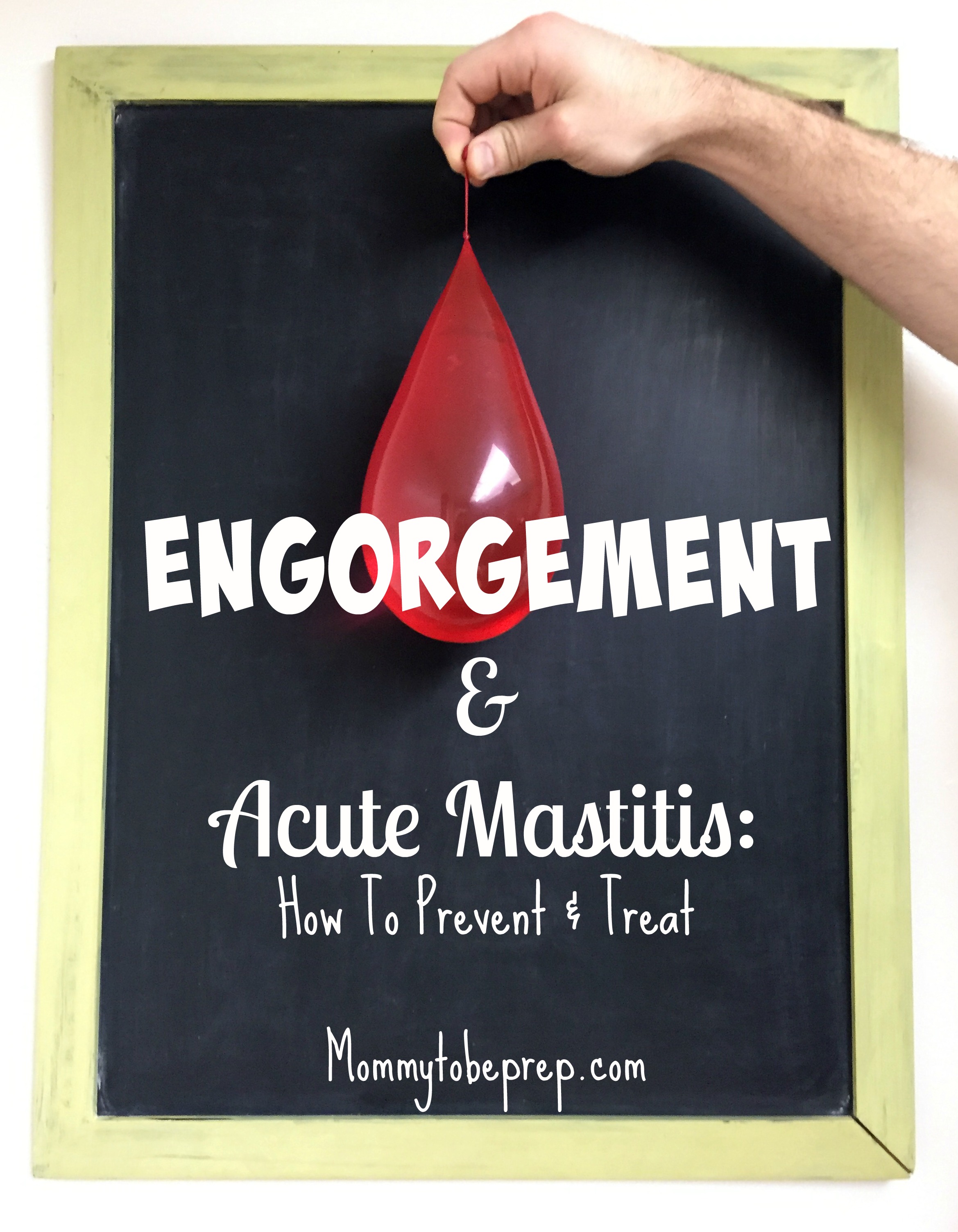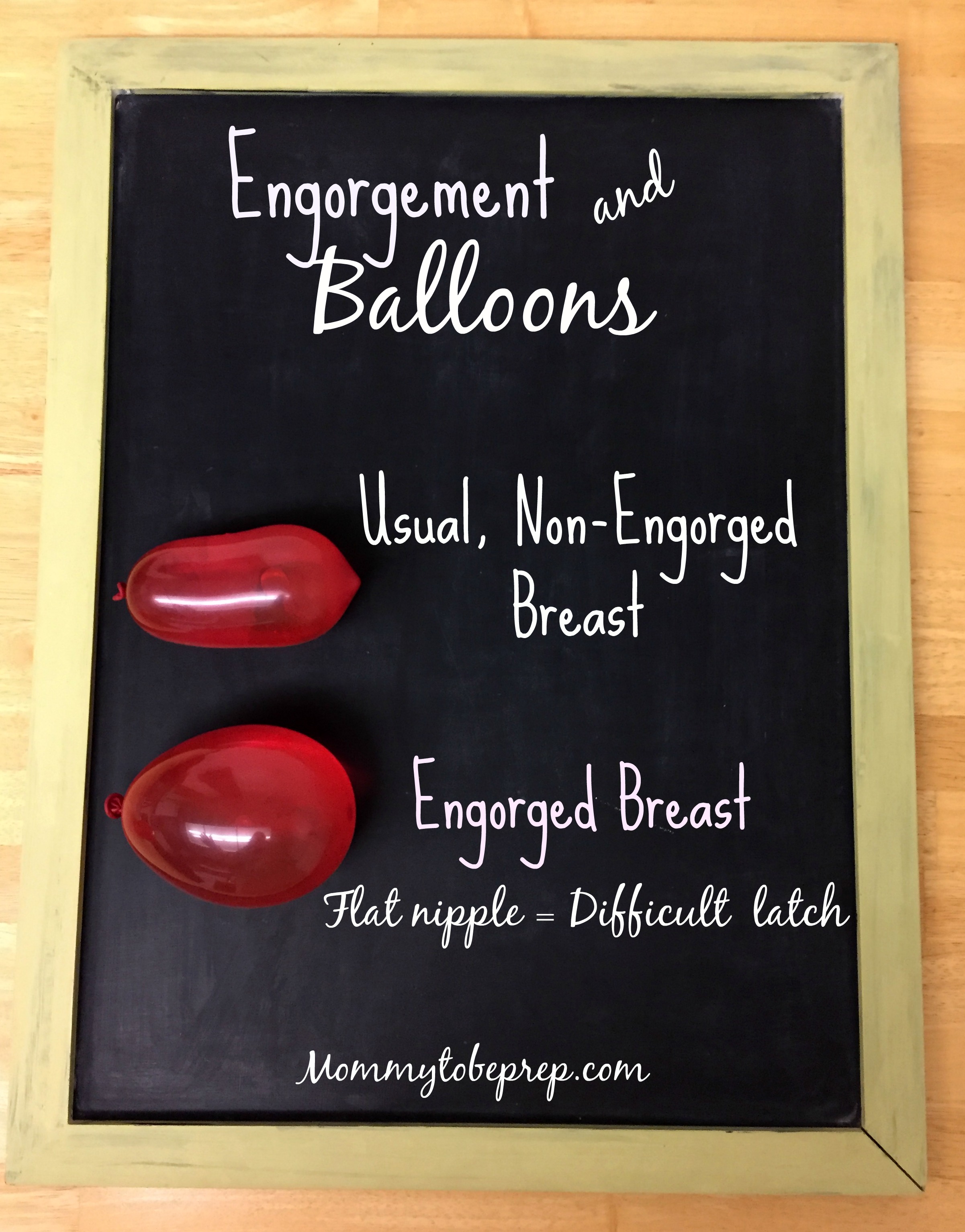Engorgement & Acute Mastitis: How to Prevent & Treat


Engorgement
It is normal for your breasts to become more full during the second to sixth day after delivery due to your mature milk coming in. The increase in volume of milk, as well as the additional blood and fluid traveling to your breasts will give you a full sensation. Some women hardly notice, while others feel like Dolly Parton, but a sour Dolly Parton, refusing hugs at all costs! Usually this fullness will dissipate in 12-48 hours when treated correctly, if not, contact your physician.
How to Prevent & Treat Engorgement?
- Ensure your baby’s latch is correct! Utilize a lactation consultant early on! If you find that you are engorged and that your nipples have become flat due to the pressure in your breasts, latching may be even more difficult.

Picture yourself trying to latch hold of these water balloons with your own mouth, without the use of your own hands! You can now imagine the frustration your poor baby may experience when dealing with engorged breasts! Reverse Pressure Softening or expressing breast milk prior to nursing may soften the breasts for an easier latch. If you are unable to get your baby latched with these tricks, or your baby is not having enough wet or dirty diapers, contact your doctor. - Breastfeed frequently and on cue. If you are infected, try to breastfeed on the infected side first. La Leche League recommends, “if your baby sleeps more than two to three hours during the day or four hours at night, wake him to nurse.”
- Do not switch your baby to your other breast until the baby shows signs of being completed (falling a sleep, or takes themselves off the breast independently).
- If your baby is not able to nurse at the breast, but you are planning on breastfeeding, pump or self-express during the times your baby would normally be feeding.
- Apply warm compresses to assist in milk let down. Lil Buds work perfect for this situation! Place them in the microwave for just 10 seconds and then on the breast (See my IG GIVEAWAY for these lavender aromatherapy breast comfort packs!) Cold compresses can also be used between feedings to decrease the pain and swelling. Lil Buds also works for this by storing the comfort packs in the freezer before use.
- Gently massage the affected area using your fingers in a circular motion moving towards the nipple (this works great in a warm shower).
- You thought cabbage leaves were just a myth for giving relief for engorgement? It is not! After washing, use the inner leaves and break a part the hard vein. Place inside your bra at room temperature or cold from the refrigerator. Change the leaves every couple of hours or if wilted, and of course do not continue if an allergy manifests. There are speculations, but it is not proven if it is the coolness of the cabbage leaves, or an innate property of cabbage itself that creates relief for the mother.
If engorgement is not treated properly, it may lead to acute mastitis…
Information obtained from La Leche League, Womenshealth.gov, and Breastfeeding A Guide for the Medical Profession.
Acute Mastitis
Remember when Mrs. Doubtfire is making dinner for his family and it all goes to disaster? Especially when his breasts catch on fire, “This hollandaise smells like burnt rubber!” Okay how can you not bust up laughing when watching that movie!? Mastitis is a breast infection that feels something similar to your breast catching on fire! The symptoms include flu like symptoms, tenderness, warmth, redness, and usually is just in one breast.
How to Prevent and Treat Mastitis?
Call your Obstetrician as soon as possible if you develop a fever for longer than 24 hours, if you find pus or blood in your breast milk, if both breasts feel infected, if you have red streaks near the area, or if the symptoms come suddenly and are severe.
To best prevent mastitis you must know the most common causes, which include:
Plugged Ducts
Missed feedings, abrupt weaning, an incorrect latch, or use of artificial nipples can cause plugged ducts as well as pressure on your breasts. This includes, wearing restrictive clothing or sleeping on your stomach.
- Continue to breastfeed on both sides using a variety of positions, this will encourage milk flow.
- Do not stop breastfeeding as this could make the situation worse. If your baby is reluctant to breastfeed on the infected breast, self-express or pump to keep the breast soft.
- Wear a comfortable supportive bra that is not too tight.
- Warm compresses as well as massage, as mentioned above.
Cracked Nipples
A break in the skin creates a route for infection to enter. Keep your nipples moisturized and work on that latch! Use a nipple moisturizer such as Lanolin (you may get free samples at Dr. office or hospital) or APNO (All Purpose Nipple Ointment), which you will need a prescription for and is best to get at a compound pharmacy.
A Mother with a Low Resistance to Infection
- Excessive blood loss from delivery can cause you to be anemic which increases your risk for infection. Get your iron supplement!
- Cigarette smoking is a double whammy because it puts a mother more at risk for plugged ducts and infection. See my post “4 Steps To Quit Smoking While Pregnant” If smoking, stop smoking.
- Stress, not eating well, and a lack of sleep can all contribute to a less efficient immune system. Put your feet up and rest in bed! Mastitis is often the first sign that you are over working yourself!
Along with these other treatments, your provider may choose to put you on an antibiotic.
*Information obtained from La Leche League International and Womenshealth.gov
Again, always keep your Doctor informed and ask any questions, they know what is best for you and your babe!